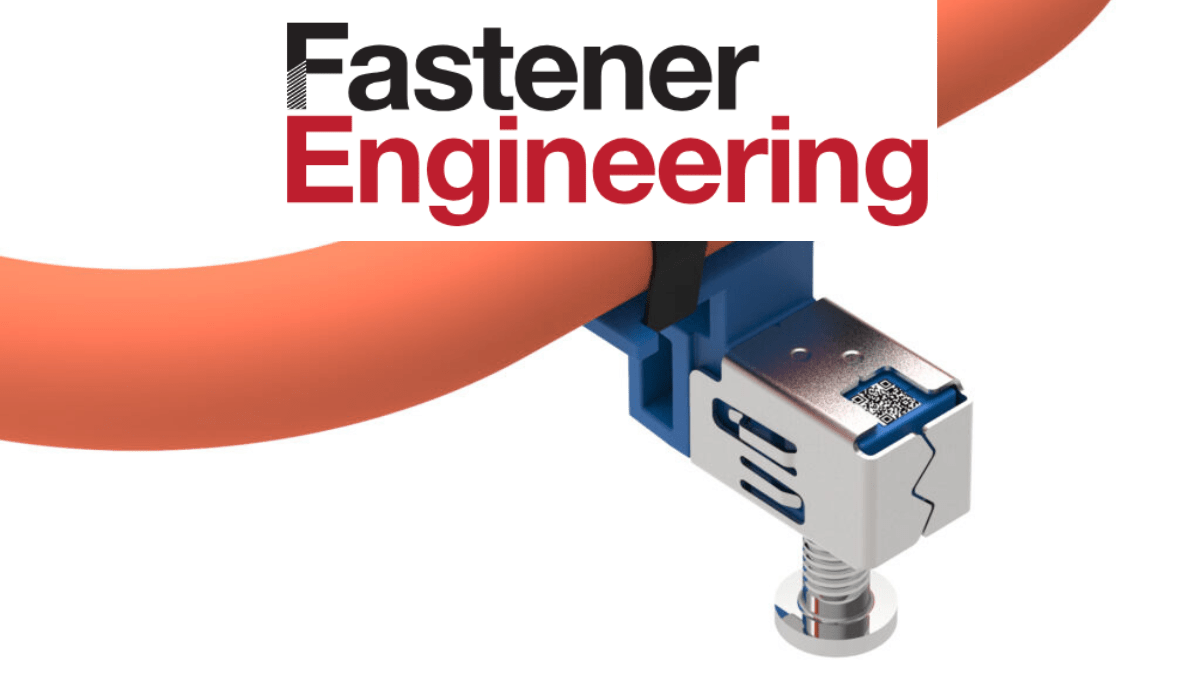
January 09, 2024
ARaymond expert: QR Codes are improving fastener safety in modern vehicles, EVs
QR Codes are improving fastener safety in modern vehicles, EVs
How are QR codes making fastener installation safer?
Written by Chris Murphy | Product Line and Innovation Manager
Originally Published: Fastener Engineering
Client: ARaymond North America
This threaded stud includes a QR code, which can easily be scanned, to confirm proper assembly. If by chance, it’s incorrectly installed, the code will not scan. The operator can then make the necessary adjustments to ensure a secure assembly.
The levels to which digitalization is impacting the manufacturing world cannot be overstated. It’s reaching nearly every level of production, including the smallest parts of assembly, such as fasteners.
Successful automotive manufacturers have been using digital means to track, predict, and maintain parts and supply chains for some time. And now, many are implementing technology typically associated with marketing campaigns and retail or grocery products.
QR codes are two-dimensional matrix barcodes invented in the mid-90s. Interestingly, they were initially created to track automotive parts during the assembly process but then became widely used in consumer products in the 2000s.
Today, QR codes are once again proving valuable in automotive manufacturing, including for safety, assembly, and supply chains.
One example relates to a vehicle’s battery terminal cover. Instead of relying on conventional torque validation to ensure nuts and bolts are properly assembled, new fastening elements clip or snap into the battery terminal cover. These fasteners include a QR code that quickly and easily validates proper installation.
Once the QR code on the fastening element is exposed, the code is scanned by a handheld device or a fixed vision system, depending on the line setup. What’s more, all of the confirmation data is stored in the system for future reference.
If the clip is installed incorrectly, the QR code will not be visible or scannable. The operator will then know to replace or re-work the assembly to ensure a secure joint.
There are several benefits to using QR code confirmation for battery terminal covers, as well as airbags and other safety systems in a vehicle. These include production efficiency, traceability, and enhancing end-user safety.
Safety first
One significant benefit of using QR codes to validate the proper installation of fasteners in automotive manufacturing is traceability.
This technology stores all QR scans in the system, confirming the work was done properly. Automakers can easily check their records to confirm the fasteners were correctly installed if any safety critical concerns arise for a specific vehicle.
Ensuring fasteners are properly installed can also help prevent warranty issues from occurring, improve overall quality, limit recalls, and reduce the number of service claims. Those are goals that every manufacturer seeks to achieve.
Most importantly, QR confirmation systems help automakers ensure vehicle safety.
Fast and efficient
Using QR codes for assembly confirmation offers quicker build times for automakers — and time savings means cost savings. This is because the typical method of torque validation requires running down a bolt or nut, and then driving it down until a specified torque threshold is achieved.
With a QR code, an operator can simply push down a fastener assembly over a threaded stud or into the hole of a panel. A simple secondary push-in locking operation exposes the QR code for scanning
The overall cycle time for each fastener installation with QR-coded fasteners can be up to 10 times faster than conventional methods. It also eliminates concerns such as cross-threading, which can happen in regular fastener installation.
More than batteries
QR code technology offers several potential applications in vehicles beyond confirming battery terminal covers are correctly installed. In fact, any vehicle safety feature installed with fasteners can benefit.
Airbag assembly, for instance, could greatly benefit from QR confirmation. Side curtain airbags often contain up to ten connections per side that must be properly mounted and spaced out to ensure driver safety in an accident. Simply scanning a QR code to ensure a safe and secure assembly can potentially make a massive impact once that vehicle is on the road.
Electric vehicles, which typically have a large amount of high-voltage routing, with cables running from the battery to other electrical components (including the motors), could also benefit from QR technology. These cables could shock a user, making them another safety-critical joint that could benefit from a quick QR confirmation.
When it comes to fasteners, QR code technology is just one example of the innovation that’s benefiting automakers and their customers — and, most importantly, ensuring a safer product experience.
Share This Story, Choose Your Platform!
Marx Layne is your competitive advantage.
Your reputation and success are our only concerns.


